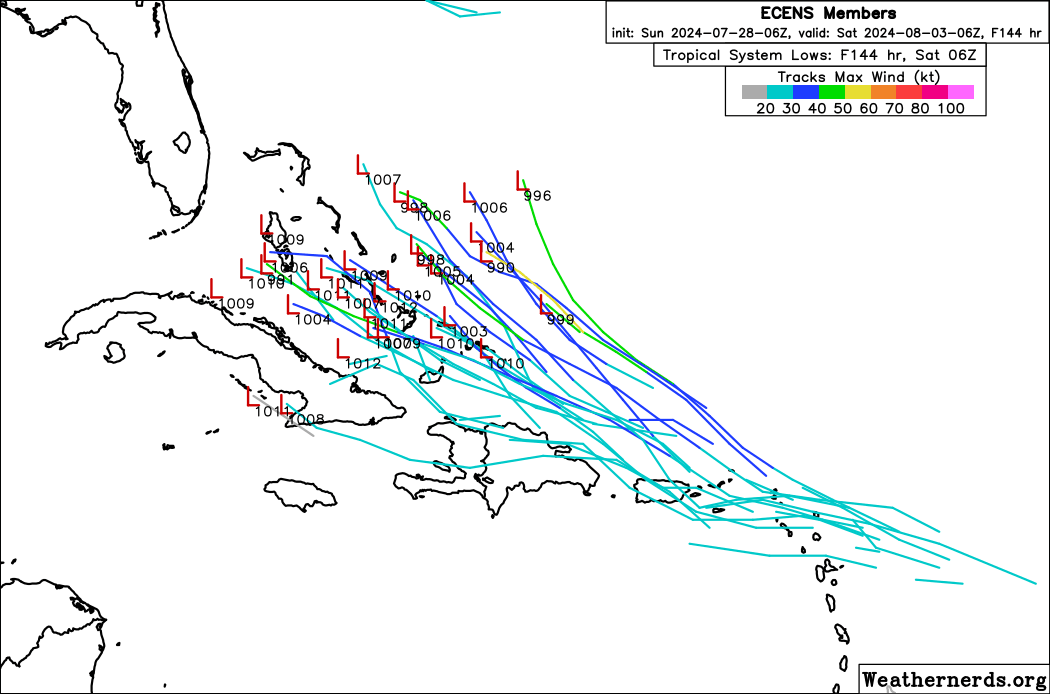#114 Postby chaser1 » Sun Jul 28, 2024 10:46 am
I think part of the problem with current modeling is that we're just not looking at nearly as finite of a disturbance as will likely be the case in the weeks to come. The NHC keeps referring to the interaction between a (ITCZ) disturbance and the approaching wave. I think that the NHC is in fact more primarily focused on the approaching wave around 33W. This wave however more pronounced, appears to be quite shallow at the lower levels and although seemingly anchored by a pronounced mid-level feature, is also abutting dryer air. This north/south wave is hauling off to the west at a pretty good clip but the 850mb vorticity seems stretched out and less pronounced then the ITCZ disturbance further west around 11N & 48W. It seems to me that the NHC is sort of anticipating that the easterly wave with the further north associated broad (and dryer) mid-level feature, will "catch-up" to and pull the better established ITCZ 850mb disturbance up (north) and merge into it.
My thinking is more in-line with Aspen's take on the EURO's forecast track in general here, and this is my reasoning. Overall conditions within the Central and Eastern Atlantic are still transitioning and I still see the eastern TW being to moisture starved to develop on its own. Meanwhile, the disturbance further WSW has what I believe to be a better establish 850mb vorticity and is better "seeded" within a pocket of greater moisture (as evidenced on IR). As fast as the eastern wave would seem to be moving west, it is the associated drier mid-level feature closer to around 16N & 33N that I believe the EURO is broadly reflecting an eventual surface reflection to develop just north of PR or Hispaniola. I am a bit more skeptical on this overall scenario and equally so regarding overall development given the interaction with land. As Aspen alluded to, I think that any cyclogenesis that might occur will be driven more by the disturbance further west, as it is "influenced" (but not merged with) the approaching TW. I think that the disturbance itself could develop in the NE Caribbean but further south and west then what the EURO is projecting. My guess is that by this time tomorrow, we might begin to see NHC's cone shift further south and west as a result.
1 likes
Andy D
(For official information, please refer to the NHC and NWS products.)












